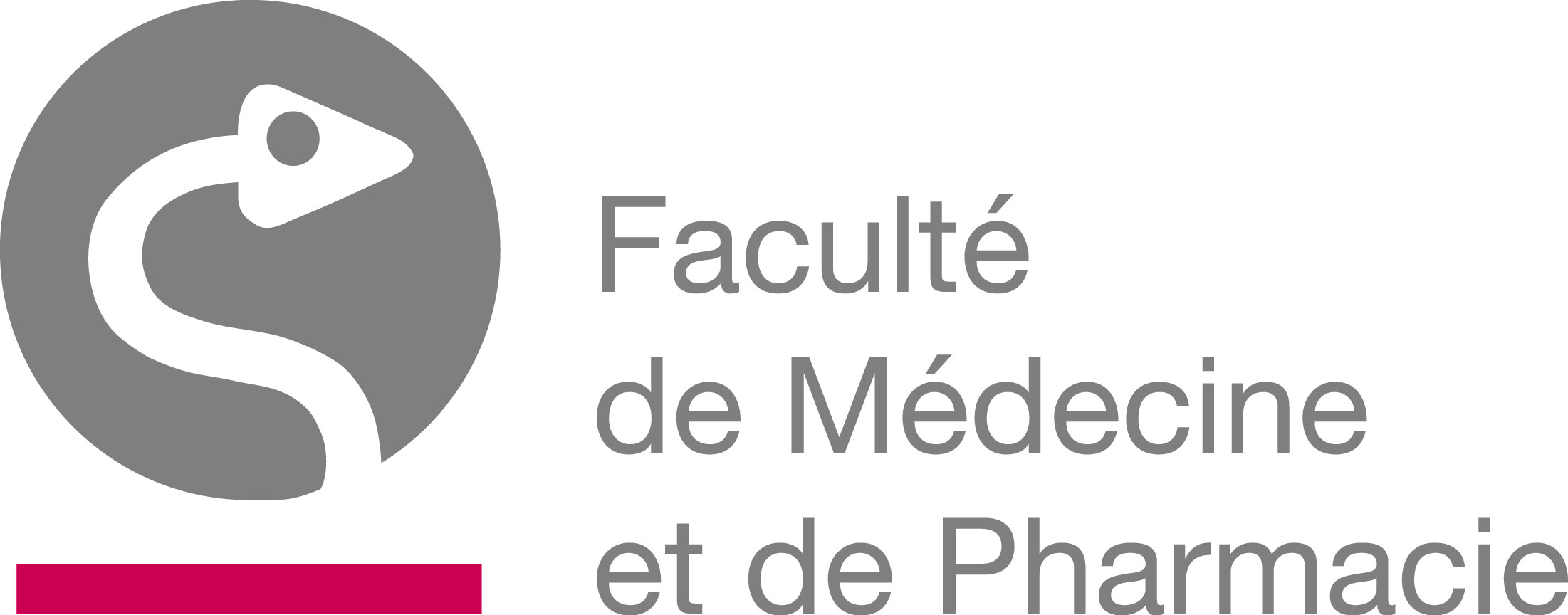 | Study programme 2020-2021 | Français | |
 | Biomedical physics | ||
Programme component of Bachelor's in Medicine à la Faculty of Medicine and Pharmacy |
| Students are asked to consult the ECTS course descriptions for each learning activity (AA) to know what special Covid-19 assessment methods are possibly planned for the end of Q3 |
|---|
| Code | Type | Head of UE | Department’s contact details | Teacher(s) |
|---|---|---|---|---|
| UM-B1-MEDECI-002-M | Compulsory UE | GOSSUIN Yves | M104 - Physique biomédicale |
|
| Language of instruction | Language of assessment | HT(*) | HTPE(*) | HTPS(*) | HR(*) | HD(*) | Credits | Weighting | Term |
|---|---|---|---|---|---|---|---|---|---|
| Français | 50 | 50 | 0 | 30 | 0 | 8 | 8.00 | 1st term |
| AA Code | Teaching Activity (AA) | HT(*) | HTPE(*) | HTPS(*) | HR(*) | HD(*) | Term | Weighting |
|---|---|---|---|---|---|---|---|---|
| M-PEBI-102 | Biomedical Physics I | 30 | 50 | 0 | 15 | 0 | Q1 | |
| M-PEBI-103 | Medical Physics II | 20 | 0 | 0 | 15 | 0 | Q1 |
| Programme component |
|---|
Objectives of Programme's Learning Outcomes
- Describe, organise, analyse and prioritise the phenomena observed in the medical field
- Understand the expression of biological realities in absolute or relative terms, the orders of magnitude, proportions and probability
- Understand and use different graphical representations of numerical values and their relationships
- Perceive spatial distribution, and understand two- and three-dimensional representations and interconvert them
- Understand the chronology of a phenomenon and master the time scales and their representations
- Demonstrate interpersonal skills developed within a medical context
- Summarise, explain, and argue
- Work in a team
- Develop reasoning skills
- Understand and apply the basic principles of reasoning (obtaining data, analysis, synthesis, comparison, the rule of three, syllogism, analogy, Boolean logic, etc.)
- Understand and apply Bayesian inference
- Use a hypothesis in inductive, deductive or abductive reasoning
- Develop critical thinking, test and monitor conclusions understanding the domain of validity, and explore alternative hypotheses
- Manage doubt and uncertainty
- Manage their studies
- Read, interpret, and critique a scientific article
- Be a responsible practitioner
- Be loyal to the facts, to the team, to intellectual property, confidentiality, etc.
Learning Outcomes of UE
The student will have refined his knowledge in general physics (mechanics, fluids, optics, waves, electromagnetism and modern physics). He will understand the physical principles involved in different biological or biomedical applications as:
-biomechanics,
-blood flow,
-elasticity,
-hearing and vision,
-nerve pulses,
-biomedical imaging.
Finally he will be able to develop a scientific method, to analyze experimental results, to estimate an error and to realize and interpet a graph.
Content of UE
See contents of AA 102 and 103
Prior Experience
Elementary notions of physics and mathematics.
Type of Assessment for UE in Q1
- Written examination
- Practical test
- Graded tests
Q1 UE Assessment Comments
Evaluation based on the evaluations of AA 102 and 103. The weighting is
-85% for the written examination on the theoretical lessons of AA 102 and 103,
-10% for the written examination concerning the practical works of AA 102,
-5% for the lab reports of AA 102.
Type of Assessment for UE in Q3
- Written examination
Q3 UE Assessment Comments
New evaluation for the theoretical parts of AA 102 and 103 through a written examination. The weighting is
-85% for the written examination on the theoretical lessons of AA 102 and 103,
-10% for the written examination concerning the practical works of AA102, the Q1 rating is maintained,
-5% for the lab reports of AA 102, the Q1 rating is maintained.
Type of Resit Assessment for UE in Q1 (BAB1)
- Written examination
Q1 UE Resit Assessment Comments (BAB1)
New evaluation for the theoretical parts of AA 102 and 103 through a written examination. The weighting is
-85% for the written examination on the theoretical lessons of AA 102 and 103,
-10% for the written examination concerning the practical works of AA 102, the Q1 rating is maintained,
-5% for the lab reports of AA 102, the Q1 rating is maintained.
Type of Teaching Activity/Activities
| AA | Type of Teaching Activity/Activities |
|---|---|
| M-PEBI-102 |
|
| M-PEBI-103 |
|
Mode of delivery
| AA | Mode of delivery |
|---|---|
| M-PEBI-102 |
|
| M-PEBI-103 |
|
Required Reading
| AA | |
|---|---|
| M-PEBI-102 | |
| M-PEBI-103 |
Required Learning Resources/Tools
| AA | Required Learning Resources/Tools |
|---|---|
| M-PEBI-102 | Sans objet |
| M-PEBI-103 | Sans objet |
Recommended Reading
| AA | |
|---|---|
| M-PEBI-102 | |
| M-PEBI-103 |
Recommended Learning Resources/Tools
| AA | Recommended Learning Resources/Tools |
|---|---|
| M-PEBI-102 | Sans objet |
| M-PEBI-103 | Sans objet |
Other Recommended Reading
| AA | Other Recommended Reading |
|---|---|
| M-PEBI-102 | Physique; de J. Kane & M. Sternheim; Dunod. Physique pour les sciences de la vie et de la santé, Clément Santamaria, Dunod. |
| M-PEBI-103 | Physique, J. Kane & M. Sternheim, Dunod. Physique pour les sciences de la vie et de la santé, Clément Santamaria, Dunod. |